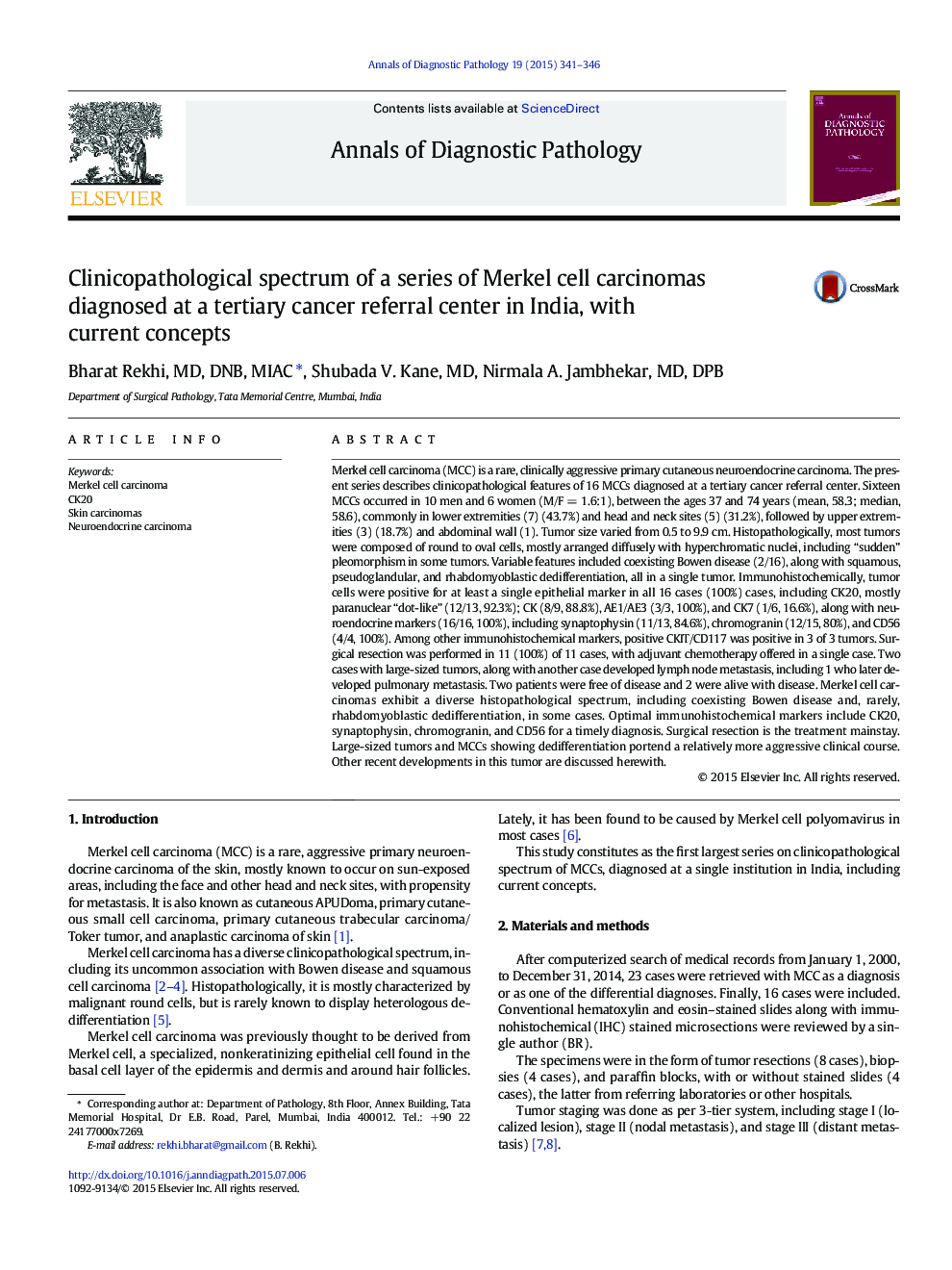| Article ID | Journal | Published Year | Pages | File Type |
|---|---|---|---|---|
| 4129895 | Annals of Diagnostic Pathology | 2015 | 6 Pages |
Merkel cell carcinoma (MCC) is a rare, clinically aggressive primary cutaneous neuroendocrine carcinoma. The present series describes clinicopathological features of 16 MCCs diagnosed at a tertiary cancer referral center. Sixteen MCCs occurred in 10 men and 6 women (M/F = 1.6:1), between the ages 37 and 74 years (mean, 58.3; median, 58.6), commonly in lower extremities (7) (43.7%) and head and neck sites (5) (31.2%), followed by upper extremities (3) (18.7%) and abdominal wall (1). Tumor size varied from 0.5 to 9.9 cm. Histopathologically, most tumors were composed of round to oval cells, mostly arranged diffusely with hyperchromatic nuclei, including “sudden” pleomorphism in some tumors. Variable features included coexisting Bowen disease (2/16), along with squamous, pseudoglandular, and rhabdomyoblastic dedifferentiation, all in a single tumor. Immunohistochemically, tumor cells were positive for at least a single epithelial marker in all 16 cases (100%) cases, including CK20, mostly paranuclear “dot-like” (12/13, 92.3%); CK (8/9, 88.8%), AE1/AE3 (3/3, 100%), and CK7 (1/6, 16.6%), along with neuroendocrine markers (16/16, 100%), including synaptophysin (11/13, 84.6%), chromogranin (12/15, 80%), and CD56 (4/4, 100%). Among other immunohistochemical markers, positive CKIT/CD117 was positive in 3 of 3 tumors. Surgical resection was performed in 11 (100%) of 11 cases, with adjuvant chemotherapy offered in a single case. Two cases with large-sized tumors, along with another case developed lymph node metastasis, including 1 who later developed pulmonary metastasis. Two patients were free of disease and 2 were alive with disease. Merkel cell carcinomas exhibit a diverse histopathological spectrum, including coexisting Bowen disease and, rarely, rhabdomyoblastic dedifferentiation, in some cases. Optimal immunohistochemical markers include CK20, synaptophysin, chromogranin, and CD56 for a timely diagnosis. Surgical resection is the treatment mainstay. Large-sized tumors and MCCs showing dedifferentiation portend a relatively more aggressive clinical course. Other recent developments in this tumor are discussed herewith.
